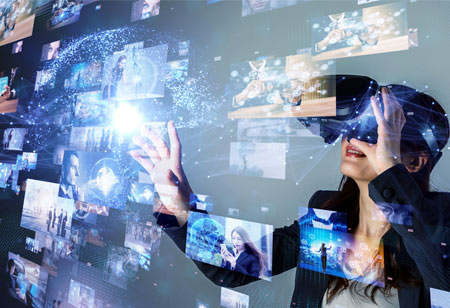THANK YOU FOR SUBSCRIBING
Four Major AR and VR Trends Revolutionizing Businesses
VR can be used to experience working in hazardous conditions or with costly, easily damaged tools and equipment without any danger, eliminating the risks of hazards and damage associated with the use of the assembly line.

By
Apac CIOOutlook | Wednesday, December 30, 2020
Stay ahead of the industry with exclusive feature stories on the top companies, expert insights and the latest news delivered straight to your inbox. Subscribe today.
VR can be used to experience working in hazardous conditions or with costly, easily damaged tools and equipment without any danger, eliminating the risks of hazards and damage associated with the use of the assembly line.
Fremont, CA: Virtual reality is about a completely interactive digital environment, while augmented reality includes enhanced virtual objects overlaid in the real-world environment. And these computer-generated virtual objects can be rendered in several formats, such as images, videos, or interactive data. These technologies are collectively known as Extended Reality (XR).
Here are four major AR-VR trends revolutionizing businesses:
Healthcare
Doctors will be able to understand which procedures are ideally suited to using the combination of these AR and VR technologies. Psychiatrists are now implementing Virtual Reality Immersion Therapy to treat people with PTSD and anxiety disorders. Using biosensors coupled with VR, they can now get a better understanding of how their patients react to stressful scenarios. VR is also used to help autistic people develop social and communication skills. Patients can also detect visual impairments by monitoring eye movements. AR is also used to train medical students to learn surgical skills on digitally simulated models.
See Also: Top Healthcare Tech Solution Companies
Industries
In the industrial landscape, VR can be used to experience working in hazardous conditions or with costly, easily damaged tools and equipment without any danger. This eliminates the dangers of hazards and damage associated with the use of the assembly line. On the other hand, AR can help manage inventory databases, build and refine prototypes' visual representations until they enter the prototype phase. They also minimize costs. With faster data processing, real-time analytics, and power sensors, it can be certain that the scope of AR-VR can increase dramatically.
Headsets
One of the major challenges in VR technology was bulky, uncomfortable, wired headsets, and display units. But some changes have also been made here. We now have customizable, smaller systems with a broader view and higher resolution displays for VR-AR headsets.
5G
Despite its sluggish roll-out in the early years, 5G will revamp and adopt the XR industry. Thanks to its hyper-mobile networking speed, the data transmission rate to the cloud, its processing, and the delivery of an actionable output would also be quicker. This will result in a zero-lag environment that will result in seamless streaming of information from the cloud. This would also reduce reliance on wired networks and onboard hardware as end data centers will process visual feedback within a few seconds.





